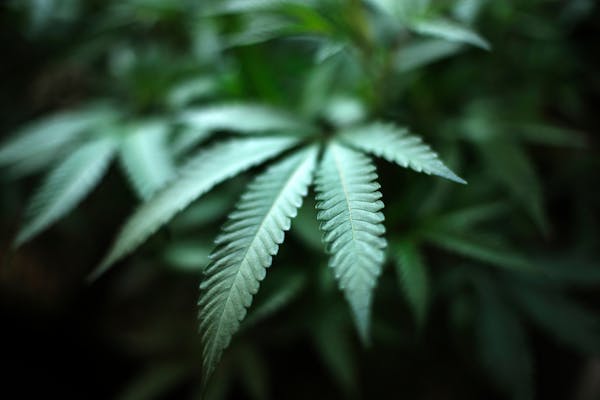Minnesota agriculture officials are raising alarms over new federal rules governing the production of hemp, warning that the regulations would spread the state agency thin and punish farmers for even the slightest errors.
The interim hemp rules adopted by the U.S. Department of Agriculture in October are "unworkable" and will put Minnesota's "promising hemp industry in jeopardy," state Agriculture Commissioner Thom Petersen wrote in a letter to the USDA on Jan. 2.
"It concerns me that there are parts of the interim rule that would make implementation of the hemp program extremely difficult in our state," Petersen said.
These rules have cast a cloud of uncertainty over the industry at a time of significant growth. The ranks of licensed hemp growers and processors in Minnesota grew more than tenfold in 2019 — from 51 to about 550 — as did the number of acres planted — from 709 to 8,000. Applications for the 2020 growing season opened last month.
State officials and farmers are concerned by a number of provisions in the USDA rules.
For the past four years, state hemp inspectors have sampled and tested fields for levels of tetrahydrocannabinol, or THC, within 30 days of harvest. THC is the psychoactive component of marijuana that gets you high; hemp is marijuana's nonintoxicating cousin and legally cannot contain more than 0.3% THC.
The USDA now says that sampling must happen within 15 days of harvest, arguing that the tight window will "yield the truest measurement of the THC level at the point of harvest." And those samples must be tested in a lab registered by the federal Drug Enforcement Administration.
Minnesota does not have a DEA-registered lab (it uses a third-party lab). Nor does it have enough hemp inspectors to collect samples from more than 1,000 fields in the span of 15 days, officials say.
"From a department standpoint, just the actual inspection and regulation of all these fields is probably going to be next to impossible with the resources that we have," Whitney Place, assistant state agriculture commissioner, said in a recent interview.
The Agriculture Department heard from more than 100 Minnesotans during listening sessions on the rules in November, Place said. Farmers were most concerned about what happens if their crops test hot.
Hemp that tests above the legal 0.3% THC limit must be destroyed under the USDA rules. State officials have asked the feds to allow remediation for these fields, noting that high THC levels can be diluted during processing or by blending hot hemp with plant material that tested below the legal limit.
Federal officials take a harder stance against farmers whose crops test higher than 0.5% THC, deeming them negligent. If a farmer negligently exceeds that threshold three times in a five-year period, the farmer will be barred from growing hemp for the next five years.
That is too strict, Petersen says, and will push law-abiding hemp farmers out of the industry. It will also stifle innovation by discouraging farmers from growing more volatile hemp varieties, he said.
About 13% of hemp samples taken in Minnesota last year tested above the legal THC limit. The average THC level in the failed samples was 1.07%, and in most of those cases, farmers had purchased seed in good faith but were misled by the sellers.
"Until hemp genetics and the regulation of the hemp seed industry improve, this entirely puts the burden of testing high on the farmers," Petersen said, asking the feds to increase the negligence level to 1% THC instead.
John Strohfus, founder and CEO of Minnesota Hemp Farms in Hastings, supports that notion. The discrepancy between what's negligent and what's not shouldn't hang on a tenth of a percentage point, he said.
"The point is even these crops that test hot ... they're still not marketable marijuana," said Strohfus, whose hemp operation is the largest in the state.
Minnesota has chosen to skirt the USDA rules — for now. The state told the USDA it will stick with its current hemp pilot program for the 2020 growing season, which is allowed, as officials draft a new plan that will comply with the rules. Only five other states, including Wisconsin, have chosen this option.
Erica McBride Stark, executive director of the National Hemp Association, said these states are wise for doing so. Her organization has similarly asked the USDA to ease its THC testing requirements and increase the threshold for "negligence."
"State plans are a little bit more lenient and farmer-friendly than what we have now, and this will give that extra year for the USDA to get it right and hopefully make the adjustments that are going to be needed to ensure success for the years to come," she said.
Twenty states have submitted new hemp plans to the USDA, three of which have been approved. Minnesota will have to submit a new plan that is compliant with the federal rules by Oct. 31.
Officials hope the USDA will relax some of its requirements before then, as agriculture departments across the country continue to weigh in on the rules.
"I think the real losers would be the growers, from the perspective of the USDA rules," Place said. "Hopefully, lots of people from across the country are commenting to get some of those changes made."
Ryan Faircloth • 612-673-4234 Twitter: @ryanfaircloth
Charge: Driver going 77 mph ran red light, fatally hit man crossing St. Paul street and kept going
Minnesota Senate GOP files ethics complaint against Sen. Nicole Mitchell
High school archer focuses on target: another national championship

